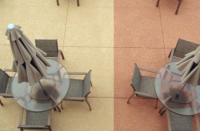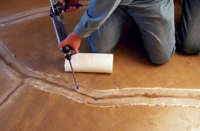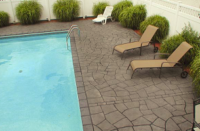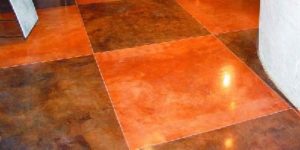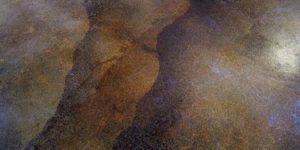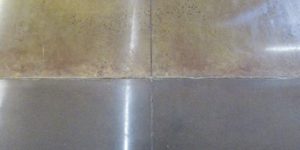
“Just apply a decorative overlay and it will hide everything.” Or, “Use acid to strip that sealer.” These are just a couple of the myths or just plain wrong recommendations I have come across on a regular basis. I really don’t know where, when or how these directives got started, but it continues to amaze me that even after decades of education they still are passed around as fact. Here are few of the more popular offenders I have come across in recent months.
The statement “just apply a decorative overlay and it will hide everything” is so far overreaching it is actually scary to think how many failures have been created by those 10 words. In my research and discussion with overlay manufacturers and expert installers, they all agree the surface you start with and the preparation prior to application are the most important parts of the overlay project.
MYTH: Decorative overlays are repair products designed to hide major imperfections and/or cracks.
Decorative overlays are often less than 1/4-inch thick and are not designed to keep a crack or major surface blemish from shadowing through. In fact, the phrase “a topping is only as good as what you put it on” is much more accurate when talking about whether to overlay or not. In most cases, an overlay is considered because of some surface defect. With that in mind, the proper repair products, crack-suppression systems, crack fillers and primers should always be a significant part of the discussion.
MYTH: Salt from de-icing chemicals or pool water will damage sealers.
Before anyone goes off the deep end, keep in mind I said “sealer” not concrete. Science shows salt or salt water negatively affects concrete in the long-run, but it does not damage concrete sealers.
If you don’t believe me, you don’t have to look much farther than your truck or car. Coatings for cars and trucks are made with the same plastic resins as coatings for concrete. If salt actually damaged sealers, then most every car or truck would have its paint coat damaged within a year by backsplash from de-icing salts on roadways. As most of us know, this is not the case. (If you live in a warm climate, you just have to take our word for it.)
The exposed metal on the underside is a different story, but the painted top side resists corrosion and looks good for decades. If you still don’t believe me, feel free to place a piece of plastic in salt water and let it sit for 6 months or even a year. I can guarantee you the plastic will be just fine no matter how long it’s immersed. The point to be made is that sealers themselves are not damaged by salt and are a great way to protect concrete, as long as the sealer is suited for the job and is properly maintained.
MYTH: Acid should be used to strip sealers.
What is the one chemical that permanently damages concrete? Acid! Then why is acid often the first recommendation when dealing with a decorative concrete repair or troubleshooting a problem, especially when it comes to sealers?
Common acids have no effect on sealers. Any acid that may penetrate through or around the sealer can damage the concrete substrate, while having no effect on the sealer. The myth that acid can be used to strip or remove sealers is just that, a myth. I find it interesting that sealers are sold in plastic containers, yet there are some who recommend them to remove or break down plastic sealers.
When it comes to removing or stripping sealers, a sealer stripper or solvent is the best product to use.
